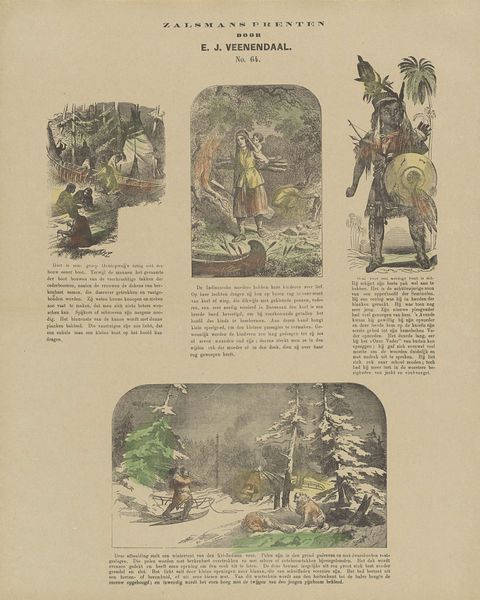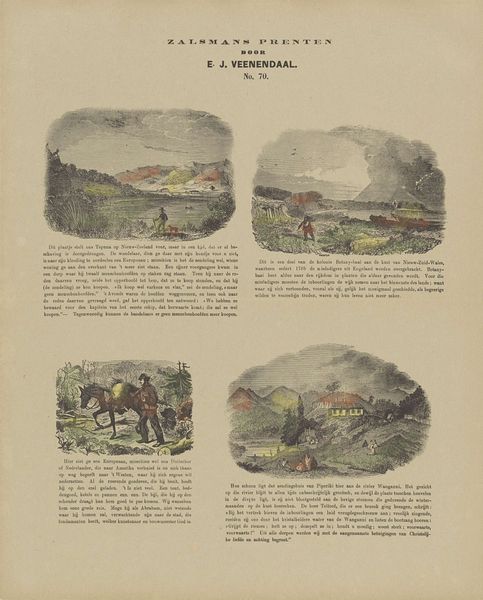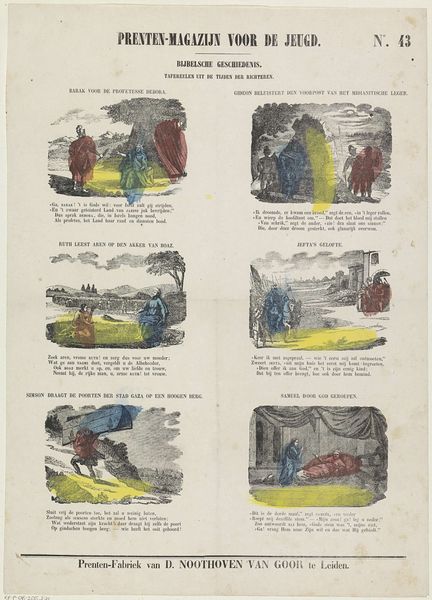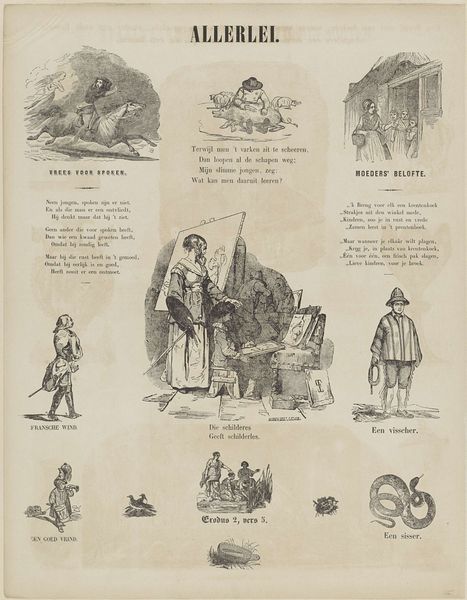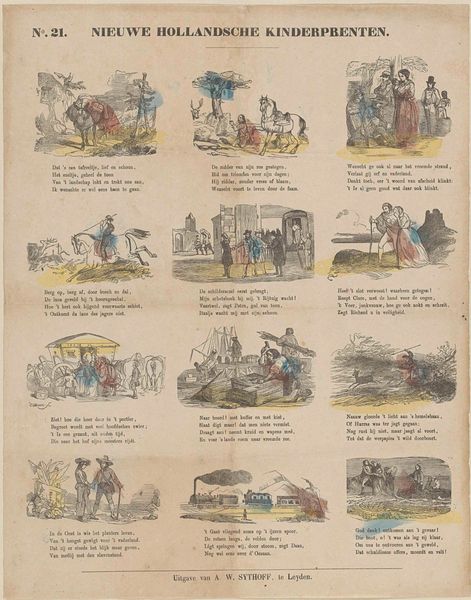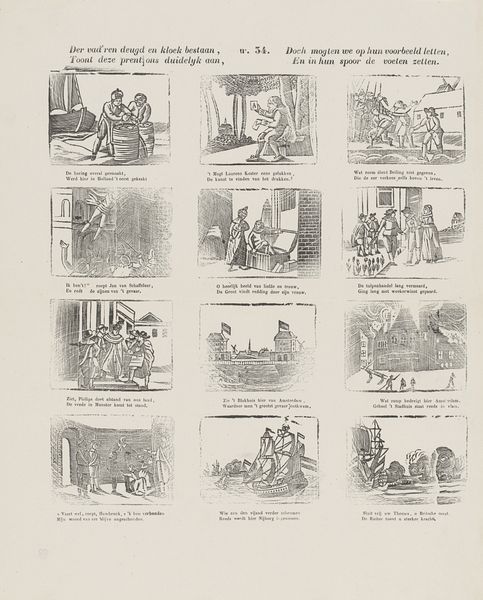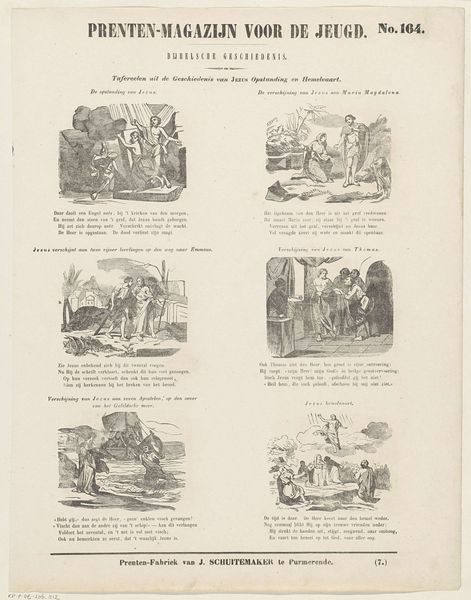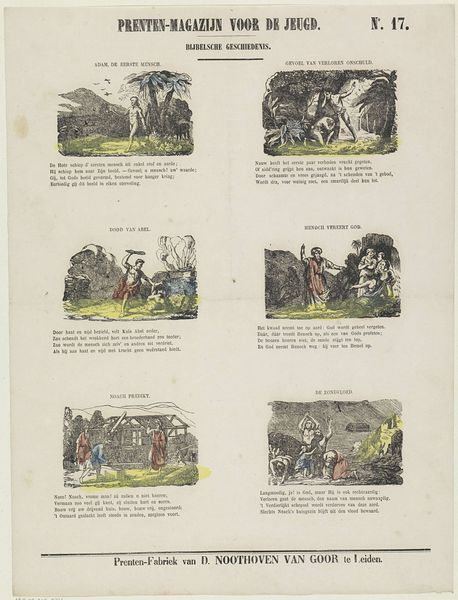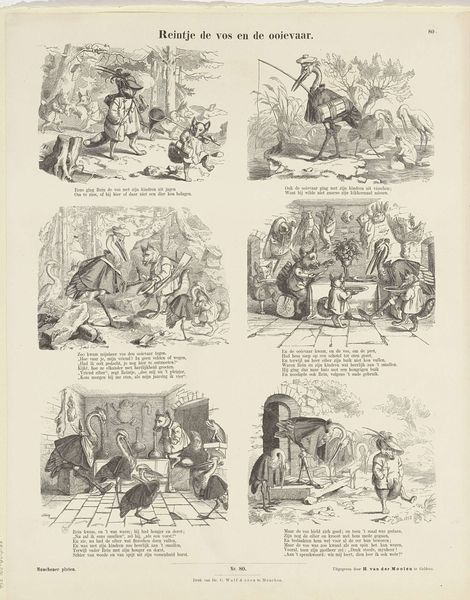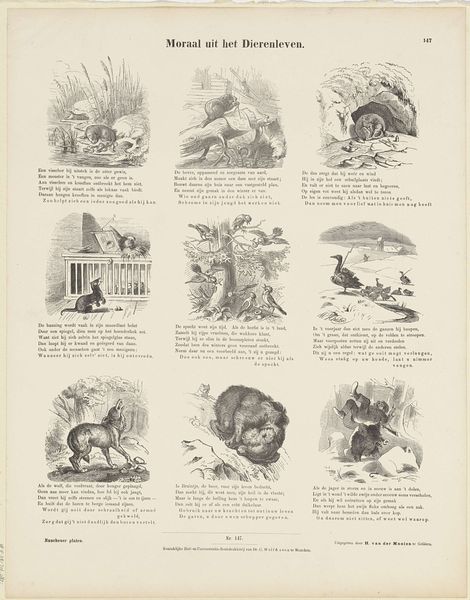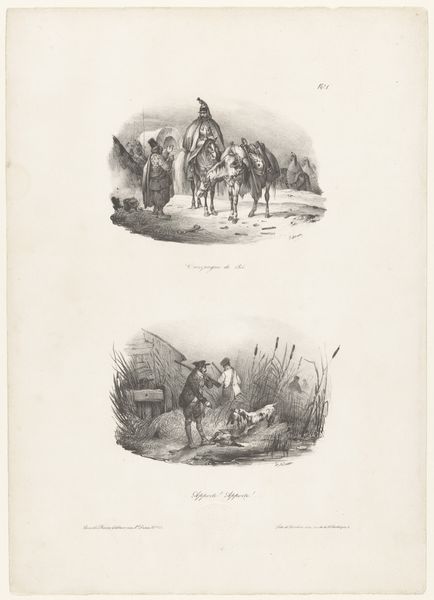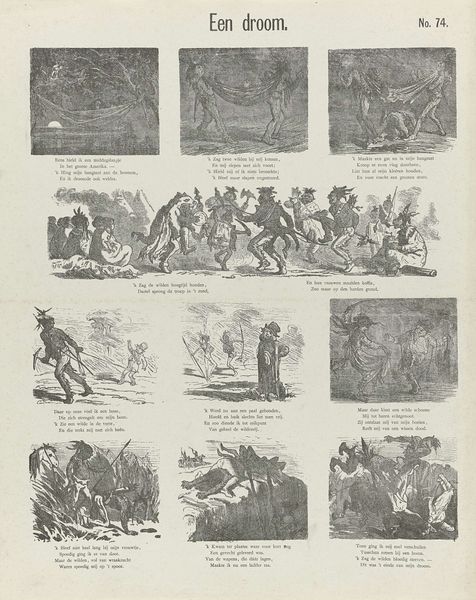
Dimensions: height 427 mm, width 342 mm
Copyright: Rijks Museum: Open Domain
Gerhardus Philippus Zalsman created this print, "Schipbreukelingen," using an engraving technique, sometime between 1834 and 1910. The composition, arranged into four distinct vignettes, presents a visual narrative bound by a common theme, perhaps a literary or historical account. Each scene contains a balanced interplay of figures and environments, using the contrast of light and shadow to create depth and mood. The use of line is particularly striking, defining forms and conveying texture within the monochromatic palette. Zalsman's structural organization of the print employs a grid-like layout, but destabilizes this strictness through the emotive content of each panel, and the subtle variations in perspective and scale. The print uses a semiotic system where the images function as signs, pointing to broader cultural narratives of adventure, survival, and the confrontation with nature's unpredictable forces. Consider how the formal constraints of printmaking—the reliance on line and the absence of colour—serve to heighten the symbolic and emotional weight of each scene.
Comments
No comments
Be the first to comment and join the conversation on the ultimate creative platform.
